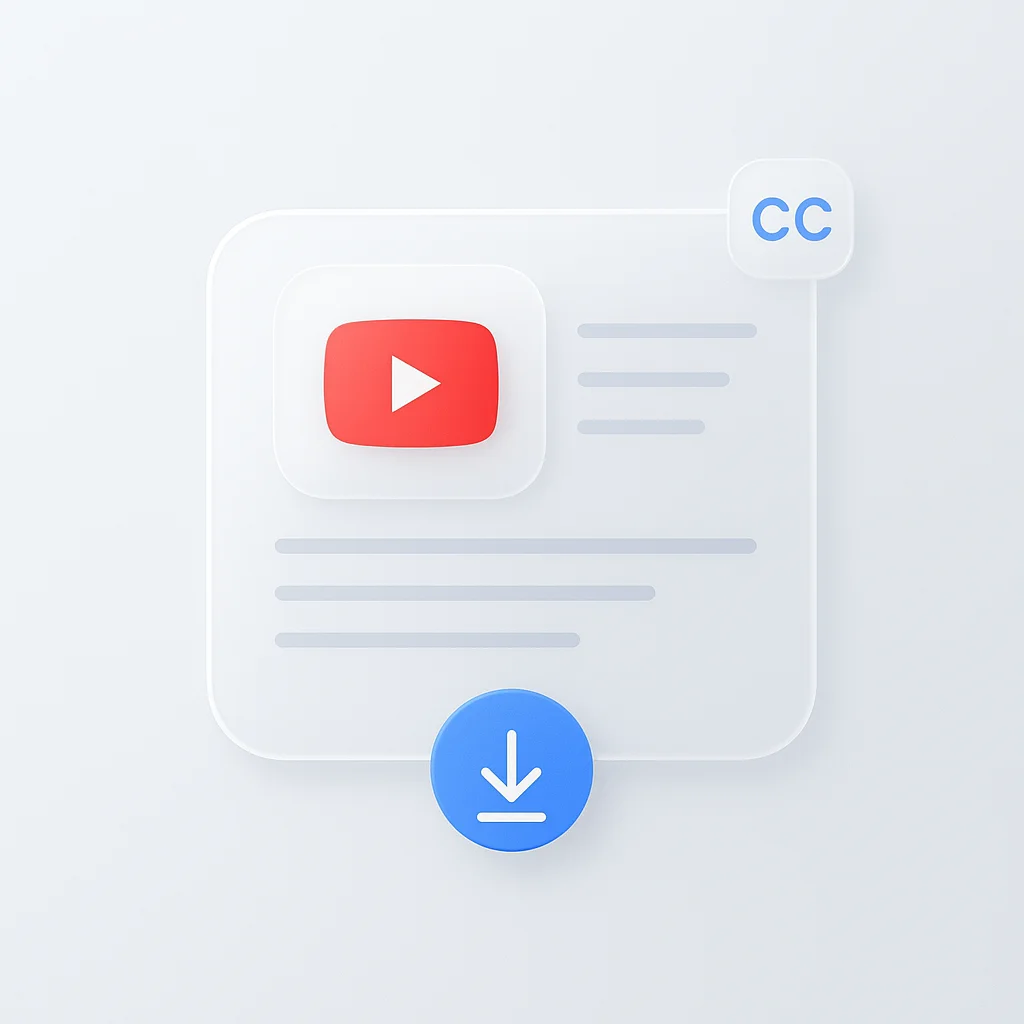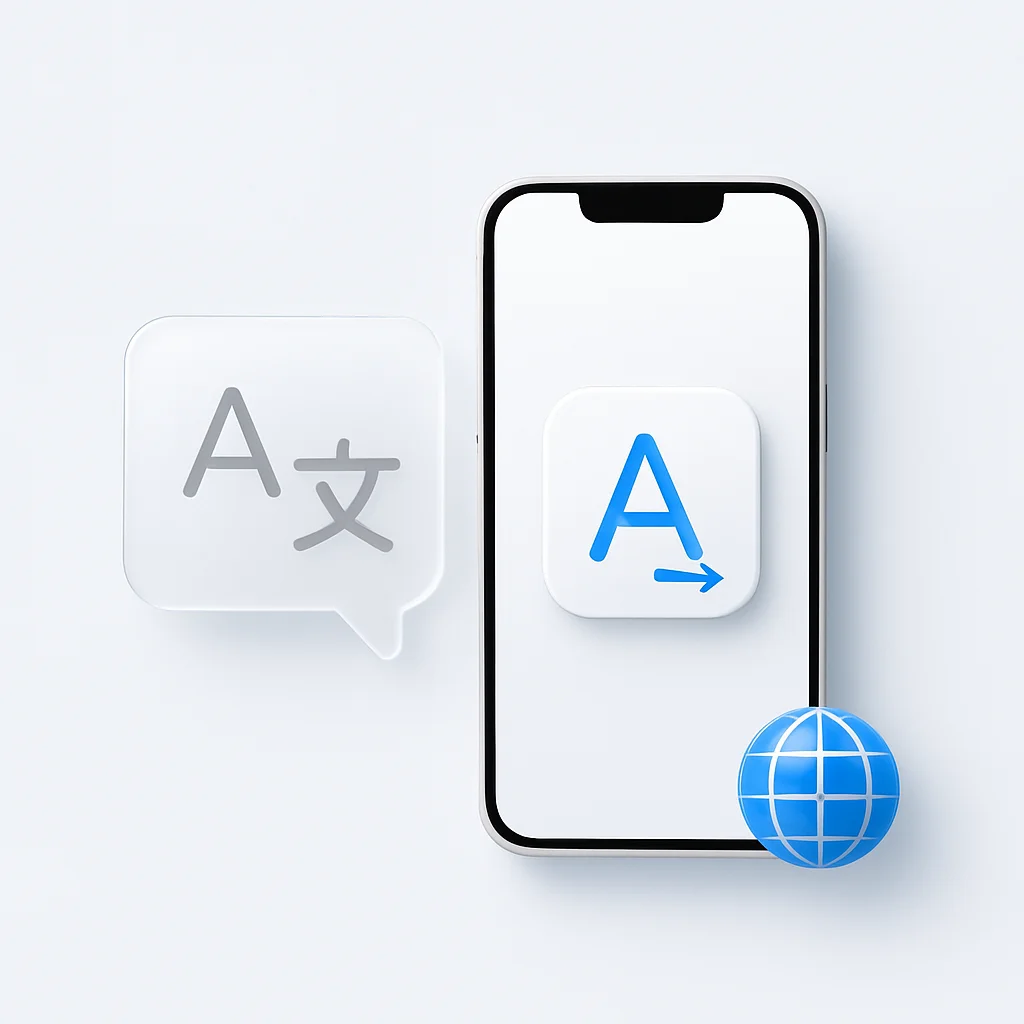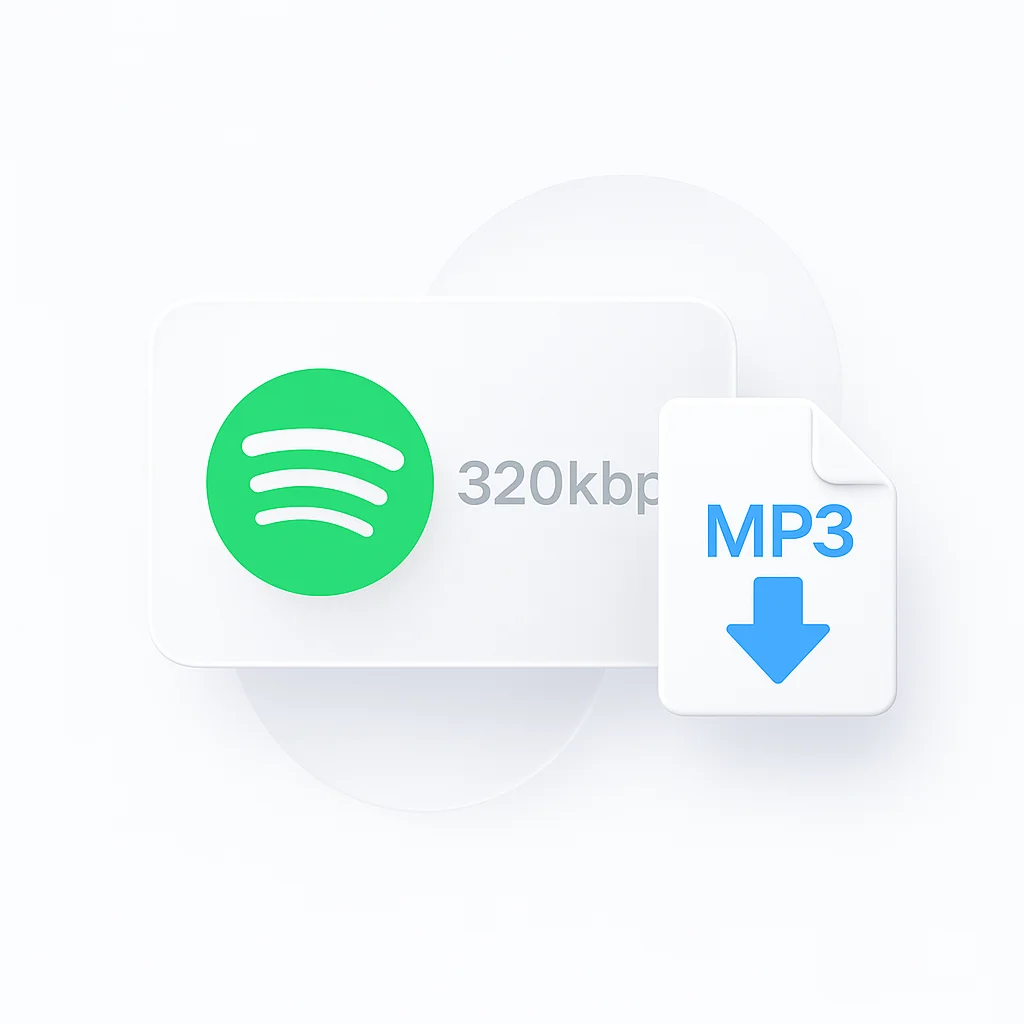Want to transcribe a YouTube video quickly and accurately? You’re in the right place. This comprehensive guide shows you exactly how to transcribe YouTube videos using powerful tools, with a focus on ScreenApp’s superior transcription capabilities.
Whether you’re a content creator, student, or professional, learning how to transcribe YouTube video content will save you time and unlock new possibilities for your content strategy.
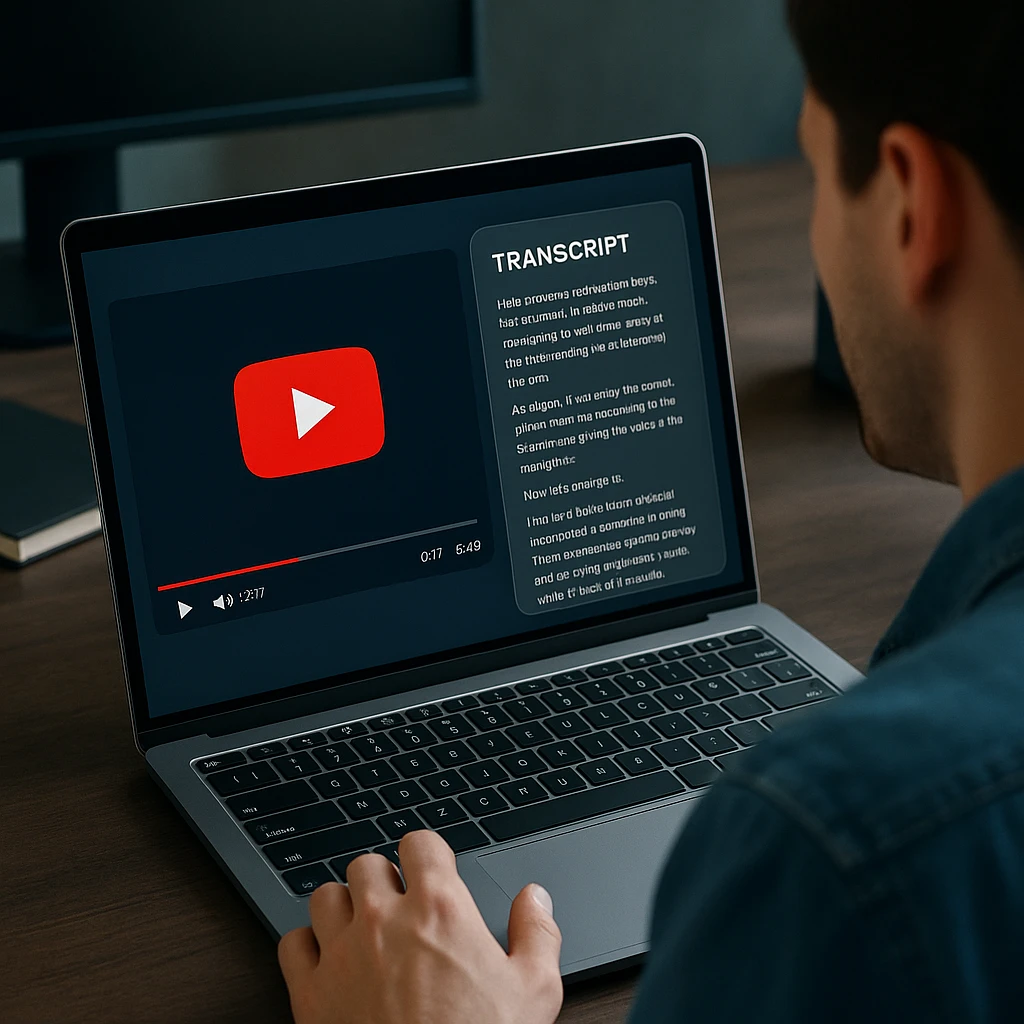
Why Transcribe YouTube Videos?
Before diving into the how-to steps, let’s understand why YouTube transcription is essential:
- Accessibility: Make your content available to deaf and hard-of-hearing audiences
- SEO Benefits: Transcripts provide searchable text that improves video discoverability
- Content Repurposing: Transform video content into blog posts, articles, and social media content
- Study & Research: Extract key information from educational videos and lectures
- Legal Documentation: Create accurate records of interviews and testimonials
How to Transcribe a YouTube Video: Step-by-Step Guide
Method 1: Using ScreenApp (Recommended)
ScreenApp offers the most accurate and user-friendly way to transcribe YouTube videos. Here’s how to do it:
Step 1: Access ScreenApp’s YouTube Transcript Tool
- Visit ScreenApp’s YouTube Transcript Generator
- Sign up for a free account (no credit card required)
- Navigate to the transcription dashboard
Alternative Methods: You can also use ScreenApp’s Chrome Extension for one-click transcription directly on YouTube pages, or try the Online Transcript Generator for bulk processing.
Step 2: Get Your YouTube Video URL
- Open the YouTube video you want to transcribe
- Copy the video URL from your browser’s address bar
- Alternatively, click “Share” → Copy link
Step 3: Generate Your Transcript
- Paste the YouTube URL into ScreenApp’s converter
- Select your preferred language (supports 40+ languages)
- Choose output format (TXT, PDF, DOCX, or SRT)
- Click “Generate Transcript”
Step 4: Review and Download
- Wait 2-3 minutes for processing (varies by video length)
- Review the transcript for accuracy
- Make any necessary edits using the built-in editor
- Download your formatted transcript
Pro Tip: ScreenApp’s AI achieves 99% accuracy even with challenging audio conditions, multiple speakers, and technical terminology.
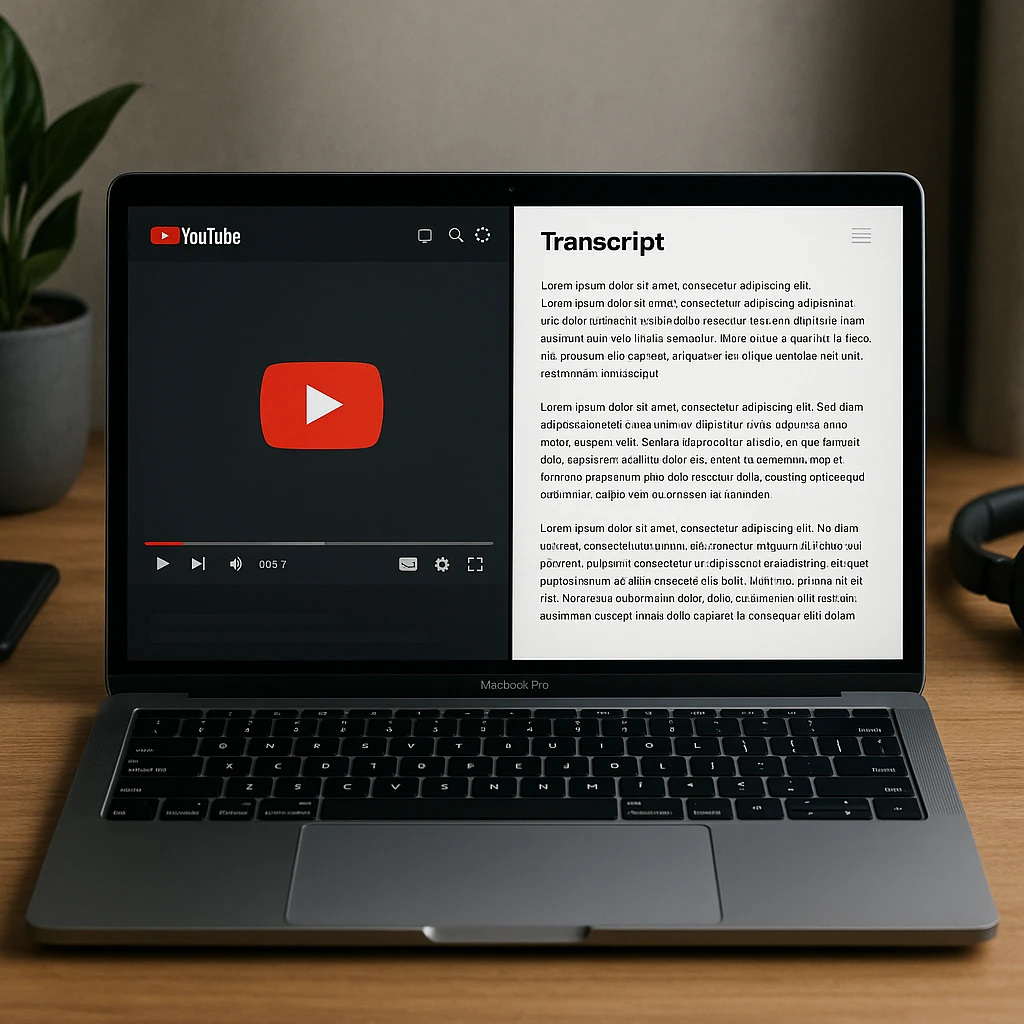
Method 2: Using YouTube’s Built-in Captions (Limited)
While YouTube’s automatic captions are free, they have significant limitations:
How to Access YouTube Captions:
- Open your YouTube video
- Click the three dots (⋯) below the video
- Select “Open transcript”
- Copy the auto-generated text
Limitations of YouTube Captions:
- Poor accuracy (often 60-70% for complex content)
- No speaker identification
- Inconsistent punctuation
- No formatting options
- Missing for many videos
Method 3: Manual Transcription (Time-Consuming)
For complete control, you can manually transcribe YouTube videos:
- Play the video in short segments
- Pause frequently to type what you hear
- Use keyboard shortcuts (Spacebar to pause/play)
- Rewind sections for accuracy
Reality Check: Manual transcription takes 4-6 hours for every hour of video content.
Method 4: Using Browser Extensions
For users who frequently transcribe YouTube videos, browser extensions offer convenience:
- ScreenApp Chrome Extension: Install the YouTube to Text Extension
- One-Click Transcription: Click the extension icon while watching any YouTube video
- Instant Results: Get transcripts without leaving the YouTube page
- Export Options: Save transcripts in multiple formats directly from your browser
Method 5: Using Transcription Software
For professional workflows, dedicated transcription software provides advanced features:
- Batch Processing: Transcribe multiple videos simultaneously
- Custom Vocabularies: Add industry-specific terms for better accuracy
- Team Collaboration: Share and edit transcripts with colleagues
- API Integration: Automate transcription workflows
ScreenApp vs. Alternative YouTube Transcription Services
ScreenApp vs. Tactiq
| Feature | ScreenApp | Tactiq |
|---|---|---|
| Accuracy | 99% | 85% |
| YouTube Support | ✅ Direct URL input | ❌ Requires meeting integration |
| Free Minutes | 30 minutes/month | 10 transcripts/month |
| Languages | 40+ | 35+ |
| Speaker ID | ✅ Advanced | ✅ Basic |
| Export Options | PDF, TXT, DOCX, SRT | Limited formats |
Winner: ScreenApp offers superior accuracy and direct YouTube support.
ScreenApp vs. Notta
| Feature | ScreenApp | Notta |
|---|---|---|
| Processing Speed | 2-3 minutes | 5-10 minutes |
| Accuracy | 99% | 90% |
| File Size Limit | 2GB | 200MB |
| Batch Processing | ✅ | ❌ |
| API Access | ✅ | ❌ |
Winner: ScreenApp provides faster processing and higher accuracy.
ScreenApp vs. YouTube Auto-Captions
| Feature | ScreenApp | YouTube Captions |
|---|---|---|
| Accuracy | 99% | 60-70% |
| Formatting | Professional | Poor |
| Punctuation | ✅ Proper | ❌ Inconsistent |
| Speaker Labels | ✅ | ❌ |
| Downloadable | Multiple formats | Copy-paste only |
| Editing Tools | ✅ Built-in editor | ❌ |
Winner: ScreenApp significantly outperforms YouTube’s built-in captions.
Advanced Tips for YouTube Video Transcription
Optimize Audio Quality Before Transcribing
- Choose videos with clear audio - avoid background music or noise
- Adjust playback speed if speakers talk too fast
- Use headphones to catch subtle details during review
Edit Your Transcripts for Maximum Value
- Add speaker labels (Speaker 1, Speaker 2, or actual names)
- Include timestamps for long-form content
- Format with headers and bullet points for readability
- Remove filler words (um, uh, like) for professional presentation
- Use video search functionality to quickly find and reference specific content
- Create chapter markers for long videos to improve navigation
Repurpose Your YouTube Transcripts
Once you transcribe a YouTube video, maximize its value:
- Blog Posts: Transform transcripts into detailed articles
- Social Media: Extract quotable snippets for posts
- Email Newsletters: Share key insights with subscribers
- Study Guides: Create structured learning materials
- SEO Content: Use transcripts to improve website search rankings
Best Practices for YouTube Transcription
For Content Creators:
- Transcribe your own videos to create accessible content
- Use transcripts for SEO optimization by including them on your website
- Create video descriptions from transcript highlights
- Generate subtitles in multiple languages
For Students and Researchers:
- Transcribe educational content for better note-taking
- Extract quotes with accurate timestamps for citations
- Create study materials from lecture videos
- Search transcripts for specific topics or keywords
For Businesses:
- Document webinars and training sessions
- Create accessible marketing content
- Extract testimonials from customer videos
- Develop FAQ content from support videos
- Use meeting transcription for internal video conferences
- Generate captions for marketing videos to improve accessibility
Choosing the Right YouTube Transcription Method
The best transcription method depends on your specific needs:
For Occasional Use (1-2 videos per month):
- Free YouTube captions for basic needs
- ScreenApp free tier for better accuracy
For Regular Use (5-10 videos per month):
- ScreenApp’s YouTube Transcript Generator for best accuracy
- Browser extension for quick access
For Professional Use (10+ videos per month):
- ScreenApp Pro with transcription software features
- API integration for automated workflows
- Team collaboration features for editing and sharing
For Educational Content:
Many educators find success combining multiple approaches:
- Start with automatic transcription for speed
- Edit transcripts for accuracy and clarity
- Use timestamps for chapter navigation
- Export in multiple formats for different learning styles
Common YouTube Transcription Challenges (And Solutions)
Problem: Multiple Speakers
Solution: Use ScreenApp’s advanced speaker identification feature that automatically labels different voices.
Problem: Heavy Accents or Fast Speech
Solution: ScreenApp’s AI is trained on diverse accents and speaking patterns, delivering consistent accuracy across different languages and dialects.
Problem: Background Music or Noise
Solution: ScreenApp’s noise reduction technology filters out background audio to focus on speech.
Problem: Technical or Industry-Specific Terms
Solution: ScreenApp’s AI recognizes technical terminology across industries, from medical to legal to technology sectors.
Frequently Asked Questions
How long does it take to transcribe a YouTube video?
With ScreenApp, most videos are transcribed within 2-3 minutes, regardless of video length. A 30-minute video typically processes in under 3 minutes.
Can I transcribe any YouTube video?
Yes, you can transcribe any public YouTube video using ScreenApp. Private or restricted videos may require downloading first.
How accurate is YouTube video transcription?
ScreenApp achieves 99% accuracy for clear audio, significantly outperforming alternatives like YouTube’s auto-captions (60-70%) or Tactiq (85%).
Is it legal to transcribe YouTube videos?
Transcribing YouTube videos for personal use, education, or accessibility is generally permitted. Always respect copyright and fair use guidelines.
Can I transcribe YouTube videos in languages other than English?
Yes, ScreenApp supports 40+ languages including Spanish, French, German, Portuguese, Japanese, Korean, and many more.
How much does YouTube video transcription cost?
Costs vary by method:
- YouTube Auto-Captions: Free (but limited accuracy)
- ScreenApp: 30 free minutes monthly, premium plans from $19/month
- Manual Transcription Services: $1-3 per minute ($60-180 per hour of video)
- Professional Human Services: $3-7 per minute ($180-420 per hour of video)
What’s the most cost-effective way to transcribe YouTube videos?
For most users, ScreenApp offers the best balance of cost and accuracy. The free tier handles occasional needs, while the premium tier costs significantly less than human transcription services while maintaining near-human accuracy.
Can I transcribe private or unlisted YouTube videos?
Yes, you can transcribe private YouTube videos using these methods:
- Download the video first (with proper permissions)
- Upload the downloaded file to transcription software
- Use screen recording to capture audio during playback
- Always respect copyright and permission requirements
How do I transcribe YouTube videos with multiple languages?
For multilingual content:
- Use ScreenApp’s language detection feature
- Separate different language segments manually
- Process each language segment individually
- Consider using specialized tools for code-switching content
Conclusion: Choosing the Right YouTube Transcription Solution
Learning how to transcribe YouTube videos opens up countless possibilities for content creation, accessibility, and knowledge extraction. The key is choosing the right method for your specific needs and budget.
Key Decision Factors:
- Accuracy Requirements: Professional projects need 95%+ accuracy, casual use can accept 70-80%
- Volume: Regular users benefit from automated solutions, occasional users may prefer free options
- Budget: Free options exist but often require more manual editing
- Time Constraints: Automated tools save significant time over manual transcription
- Output Formats: Consider what formats you’ll need for your workflow
Quick Recommendations:
- For beginners: Start with YouTube’s built-in captions, then upgrade for accuracy
- For students: Use ScreenApp’s free tier combined with manual editing
- For professionals: Invest in automated tools with editing capabilities
- For businesses: Consider API integration and team collaboration features
Whether you’re creating accessible content, developing study materials, or repurposing video content for SEO, the right transcription approach can transform your workflow and expand your content’s reach.
Next Steps:
- Try different methods with the same video to compare results
- Start with free options to understand your needs
- Gradually upgrade to more advanced tools as your requirements grow
- Always review and edit transcripts for accuracy before publishing
The transcription landscape continues evolving, but the fundamental goal remains the same: making video content more accessible, searchable, and useful for everyone.
